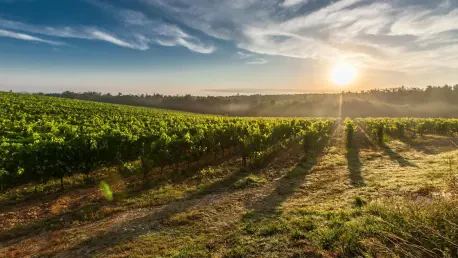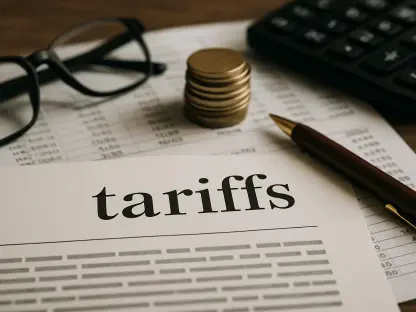Agriculture has long played a critical role in shaping the landscape of Iowa, both environmentally and economically. Yet, as 2025 unfolds, new challenges and conversations are surfacing, compelling stakeholders to closely examine the relationship between agricultural activities, water quality, and the rural economy. Recently published research has drawn attention to nitrate pollution in Iowa’s major waterways, while shifting legislative landscapes and trade negotiations add layers of complexity to the agricultural sector’s economic forecast. As the nation contemplates the implications of these findings, intertwined themes of environmental stewardship, economic resilience, and policy-making emerge as central to the discussion. All these elements convey the delicate balance that stakeholders must navigate to ensure sustainable growth and development in rural America.
Environmental Impact of Agriculture on Iowa’s Waterways
The recent study commissioned by Polk County has highlighted agriculture’s significant contribution to nitrate pollution in the Des Moines and Raccoon Rivers, which provide crucial water resources to Iowa communities. The findings underscore that over 70% of the nitrate present in these rivers is derived from agricultural activities, notably animal manure and fertilizers. With such a substantial impact observed, Central Iowa Water Works has had to enforce water usage restrictions in an effort to adhere to the Environmental Protection Agency’s safe drinking water standards. Pollution not only threatens water quality but also necessitates costly mitigation efforts that weigh heavily on local resources.
Local officials and agricultural leaders have responded to the study by emphasizing the need for collaborative problem-solving between rural and urban stakeholders. Iowa Secretary of Agriculture Mike Naig has advocated for a cooperative approach to bridge gaps and move toward solutions, while Erin Lehman of the Iowa Farmers Union emphasized public investments’ role in empowering farmers to tackle pollution effectively. The situation reveals the multifaceted nature of addressing water quality issues, where shared responsibility and integrated strategies are pivotal. Such efforts are further compounded by economic considerations, pushing the broader agricultural community to evaluate the financial implications of environmental practices.
Economic Outlook for Rural America Behind Tariff Talks
As Independence Day celebrations took place in 2025, economic uncertainties have continued to loom over both rural and urban communities, with several factors woven into the fabric of daily discourse. The ongoing legislative undertaking, known as the “one big, beautiful bill,” promises significant changes, including making the 2017 tax cuts permanent and revising key welfare programs. While supporters argue that it could spur growth, critics warn that adding $2.4 trillion to the national debt remains a major risk. Ernie Goss, an economic analyst, shared insights into how sweeping changes could impact rural economies, potentially altering the financial equilibrium of household incomes and agricultural enterprises alike.
International trade, particularly tariff negotiations, has equally played a pivotal role in shaping the agricultural economic landscape. Recent strides toward a trade deal between the U.S. and Vietnam, which outlines specific tariffs on imports and exports, have generated optimism for the agricultural sector. Analysts speculate that such agreements might cultivate new market opportunities, thereby strengthening rural America’s economic foundations. Nevertheless, the road ahead remains fraught with challenges, as the collaboration between policymakers, farmers, and economists becomes ever more critical in navigating this uncharted future. Understanding these economic developments and the subsequent strategic adjustments remains a focus for stakeholders seeking to capitalize on transient opportunities within the rural economic landscape.
Commodity Markets and Livestock Industry Developments
Commodity markets continue to demonstrate volatility, influenced by dynamic supply and demand conditions, unpredictable weather patterns, and legislative changes affecting diverse agricultural products. Wheat and corn markets have experienced mixed outcomes, reflecting market participants’ ongoing struggle to counterbalance historically low acreages and yield expectations. Simultaneously, soybean contracts have recently rebounded, injecting a dose of optimism into an otherwise fraught sector. Among these ups and downs, the agriculture industry remains resilient, with cyclic price trends prompting adaptation and providing potential avenues for recovery, should favorable conditions persist.
The livestock market has mirrored this volatility, with feeder and live cattle prices climbing in recent months, primarily fueled by supply constraints and sustained demand. Analysts have noted a tightening cattle herd, emphasizing the intricate balance between embracing livestock operations and grappling with inflationary pressures. Moreover, Walmart’s strategic decision to vertically integrate its supply chain in the meat industry may signal broader shifts yet to transpire, fundamentally reshaping market dynamics. As these developments unfold, the agriculture sector continues to adapt to evolving challenges, underscoring the necessity for strategic planning and innovation. Livestock-focused investments may offer a buffer against uncertainties, promoting diversification and resilience in agribusiness ventures.
Navigating the Future: Collaborations and Opportunities
During the 2025 Independence Day festivities, communities across the United States were marked by economic uncertainties that cut across both rural and urban settings. Conversations frequently centered around a legislative effort referred to as the “one big, beautiful bill.” This bill aims to cement the 2017 tax cuts and overhaul key welfare programs. Supporters claim these measures could ignite economic growth, while opponents caution that it might dangerously add $2.4 trillion to the national debt. Economic expert Ernie Goss has delved into how these sweeping reforms could impact rural economies, potentially reshaping household finances and the viability of agricultural enterprises.
The arena of international trade, notably tariff talks, has been instrumental in forming the agricultural economic terrain. Notably, recent progress toward a trade agreement between the U.S. and Vietnam, which delineates tariffs on both imports and exports, has sparked hopes within the agricultural community. Experts suggest such deals could open new markets, bolstering rural America’s economic underpinnings. Yet, the pathway isn’t without obstacles. Successful navigation of this uncertain future will require collaboration among policymakers, farmers, and economists. They must understand these economic shifts and adapt strategically to seize temporary opportunities in the evolving rural economic environment.









